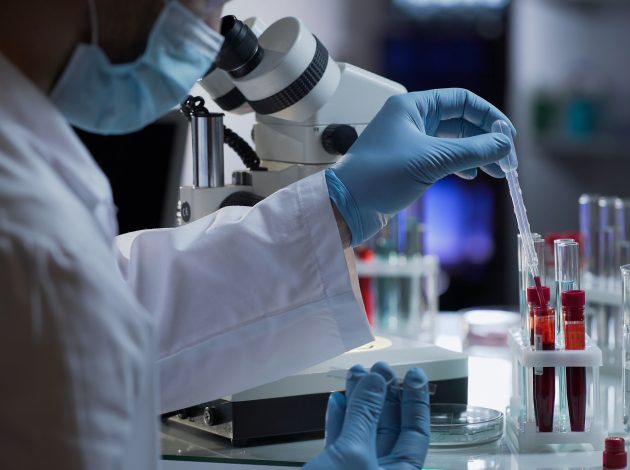Antibodies and Immunity – how do they relate to one another?

A key question for science and health, and to successfully beat Covid-19 is;
How much protection have we built against the virus as a result of natural infection and vaccination?
Since April 2020 our Coronavirus (COVID-19) Infection Survey (CIS) has collected nose and throat swabs and blood samples from people across the UK to test for SARS-CoV2, the virus that causes COVID-19, and for antibodies against it.
Professor Sarah Walker, Professor Jeremy Farrar and Sarah Crofts explain more about antibodies and how our immune system protects us from infection:
How the immune system works:
Antibodies are made by our body after infection and after vaccination. They contribute to protecting us against a second infection and prevent us getting sick. Before the vaccination programme, the number of people testing positive for antibodies gave a good indication of past SARS-CoV2 virus infection. Since the start of 2021, we have seen the impact of vaccination with an increasing number of people testing positive for antibodies, including after their first dose of vaccine.
Like any virus, SARS CoV-2 is made of up of two key parts: genetic material (RNA) and proteins. The proteins found on the surface of the virus, called antigens, are recognised by the immune system, causing it to respond to the virus and prevent illness. There are several parts of the immune system that provide protection against viruses. If our immune system recognises a viral antigen, perhaps from a past infection, then immune cells, known as ‘B cells’, will produce antibodies that bind to the virus and signal for other cells in the immune system to destroy the virus.
This recognition comes from part of the immune system that remembers past infection, known as the ’adaptive immune system’ , which consists of B cells and T cells. T cells help the B cells produce antibodies and activate other immune defences and tell other cells to destroy the virus. It is called adaptive because each infection leads to T and B cells that are specifically tuned to that infection. If someone gets exposed to the same virus again, these T and B cells (called “memory cells”) remember the old infection and rapidly multiply to fight it off without the person getting sick.
How vaccines ‘trick’ the immune system:
Rather than getting these ‘memory’ cells from a natural infection, a vaccination tricks the body into thinking that it has been infected when it hasn’t, so that their immune system develops these ‘memory’T cells and B cells. Then, for example, if a person gets exposed to SARS-CoV-2, their body has memory B cells and T cells which recognise the antigens on the viruses’ surface and trigger the production of antibodies to fight it.
Antibody finger-prick tests help build the picture, but they don’t tell the whole story:
While our tests for the presence of antibodies are a helpful measure of past infections and the impact of the vaccination programme, these results are not a measure of the number of people who have protection against COVID-19. That is because they only measure one part of the adaptive immune system. While antibodies are easy to detect from a relatively small amount of blood, such as from a finger prick, other parts of the immune system, such as T cells, require a larger blood samples and more specialised laboratory equipment to process and assess. This would not be possible to do in as large a study such as our survey.
When we test a blood sample for the presence of antibodies, we can get a negative result because the person has no antibodies or has antibodies at too low a level to reach the level that the test calls positive. When a blood sample is sent to the laboratory for testing, it is exposed to proteins very similar to those in the SARS-CoV-2 virus and a positive result occurs when enough antibodies attach to the protein of the virus to be detectable.
The level the test calls positive comes from comparing groups that definitely have not had the infection (blood samples taken from blood donors early in 2019 before SARS-CoV-2 was infecting people) and people who definitely have had the infection (blood samples taken from people who were so unwell with COVID-19 they ended up in hospital). So being “positive” on a test means that antibodies have reached a high level similar to people who had been admitted to hospital.
A negative antibody test does not mean that a person is not protected:
A person may test negative for antibodies, but still have increased their levels a lot from where they started – they may just not have reached the level that the test called ‘positive’. Some people take longer to increase their antibodies than others, so they may carry on increasing their levels and reach the “positive” level, or they may not.
A person may have tested positive for antibodies at one time, but then have a negative test result later as antibody levels may drop naturally over time.
At the moment we do not know what this means for protection against getting COVID-19 – this is one of the many things the survey is trying to find out. Early studies in healthcare workers suggest that people will get some protection against COVID-19 infection if they have increased their antibodies but are still below the “positive” level, but we don’t yet know exactly by how much. We also don’t know whether dropping antibody levels increase the risk of getting COVID-19 again – the T cells which antibody tests don’t measure are one reason why people may still be protected.
Informing vaccine development:
It is so important our infection survey continues to test participants for past infection and after vaccination for the presence of antibodies. This will help decision makers have the information they need to understand how the pandemic is spreading and the effectiveness of the vaccination programme. Continued monitoring will help us understand how antibody levels change between first and second doses and how different people respond to vaccination both in the short-term and over the following year. Information like this will be critical to work out whether we will need “booster” vaccinations, in some or all people, and when.
Recognising the importance of this essential information, we have recently increased our antibody testing to more adults in our survey by introducing a new finger prick test which can be done by the participant themselves in their home (a little bit like testing for a blood sugar level in the blood). This will eventually enable 150,000 people across the UK to be tested for antibodies every month for the next year, and therefore we hope measure how protection against SARS-CoV-2 virus changes over time. This will provide critical information on the pandemic and how we can plan to lift restrictions and return to normality.

Professor Sarah Walker is Professor of Medical Statistics and Epidemiology at the University of Oxford

Professor Jeremy Farrar is Director of the Wellcome Trust

Sarah Crofts is Head of Analytical Outputs for the COVID-19 Infection Survey at the Office for National Statistics